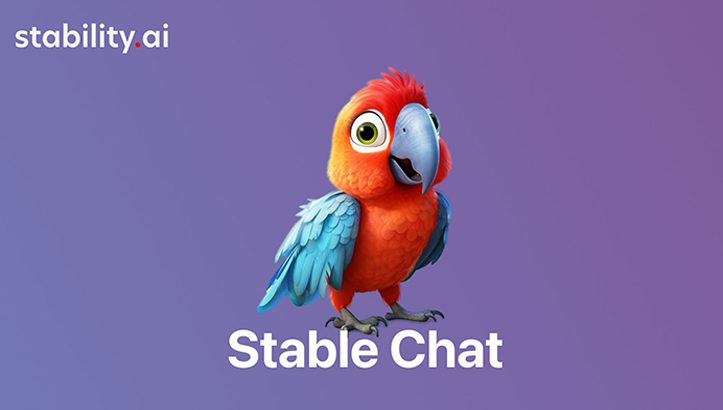TL;DR:
- Stability AI introduces Stable Chat, a web-based chat interface powered by the groundbreaking language model Stable Beluga.
- Stable Beluga, based on LLaMA foundation model and fine-tuned using GPT-4’s synthetic dataset, surpasses benchmarks set by other models.
- Explanation tuning, a technique inspired by Microsoft’s Orca, empowers Stable Beluga’s responses by providing comprehensible explanations for its outputs.
- Two versions of Stable Beluga, boasting 65B and 70B parameters, were released under non-commercial licenses, aiming to encourage collaboration and research.
- Stability AI leverages user feedback through the Stable Chat interface to enhance and refine the model’s performance.
- Stability AI’s founder, Emad Mostaque, engages with users on social media, highlighting the commitment to user-driven improvement.
- Stability AI’s LLMs are selected for an AI red-teaming event, aligning with efforts by the White House to assess and mitigate risks in AI models.
Main AI News:
In a remarkable stride forward, Stability AI has proudly unveiled Stable Chat, a cutting-edge web-based chat interface designed for their revolutionary open-access language model, Stable Beluga. Emerging as a frontrunner upon its debut, Stable Beluga stood as the paragon of open large language models (LLMs) on the esteemed HuggingFace leaderboard.
Rooted in the LLaMA foundation model, an innovation pioneered by Meta, Stable Beluga is further refined through the utilization of a synthetic dataset meticulously crafted by GPT-4. This synergy culminates in the flagship Stable Beluga model, boasting an impressive 70 billion parameters and effortlessly outshining the benchmarks set by even ChatGPT, as evidenced across multiple yardsticks, including the AGIEval, an evaluative framework drawing upon the rigors of LSAT and SAT.
Strategically concocted to empower users, the Stable Beluga models are a manifestation of diligent effort inspired by Microsoft’s Orca, a nuanced iteration of the LLaMA framework. Drawing from this inspiration, a groundbreaking technique christened “explanation tuning” takes center stage. Much akin to instruction tuning, a prevailing strategy among various open LLMs, including ChatGPT and Vicuna, explanation tuning hinges on a reservoir of illustrative inputs and corresponding desired model responses, diligently curated by an instructive source. While ChatGPT thrives on insights from human users, the world of Orca and Stable Beluga orchestrates its masterstroke by beckoning GPT-4 to elucidate its rationale for generating each output, effectively delivering responses “explaining like I’m five.”
Undeniably, Stability AI upholds an exemplary benchmark with its custom-crafted explanation tuning dataset, a formidable collection comprising 600,000 illustrative instances – a tenth the magnitude of the Microsoft counterpart. Bolstered by this reservoir, the prowess of Stable Beluga unfurls in twin avatars: Stable Beluga 1, a tour de force harnessed from the 65 billion parameter bedrock of the original LLaMA model, and Stable Beluga 2, a monumental leap forward enmeshed within the 70 billion parameter labyrinth of Llama 2. Both behemoths tread the landscape under the banner of a non-commercial license. While their initial strides etched their name in the upper echelons, the current tapestry of LLaMA-centric refinements has modestly nudged Stable Beluga 2 from its zenith and even relegated Stable Beluga 1 to more humble ground.
In a gesture fostering collaborative progress, the release of these models under a non-commercial aegis stems from Stability AI’s concerted aspiration to embolden researchers, urging them to engage in the virtuous cycle of evolution and enhancement. However, the pragmatic tether to resources, which often elude the grasp of everyday researchers, ignited the genesis of the Stable Chat web portal. A seamless gateway, it invites users to tread the interface, accessible through a bespoke login or the ubiquitous Google credentials. Here, the model’s responses ascend the ladder of scrutiny, subject to the democratic sway of upvotes, downvotes, and even flagging, thus formulating a blueprint for the model’s growth trajectory.
It is worth noting that Emad Mostaque, the luminary founder of Stability AI, took to Twitter/X to herald this epoch-making milestone. Amidst a cascade of responses, one user lauded the model while highlighting its “excessive caution” in dispensing factual information. Mostaque, unerring in his pursuit of perfection, urged the user to funnel their insight through the dedicated web interface, thereby underscoring Stability AI’s commitment to an ever-improving user experience.
Meanwhile, the echelons of Stability AI are alight with another triumph – a resonating proclamation that their LLMs have been enlisted for an AI red-teaming extravaganza, slated as the highlight of DEF CON 31. Esteemed and endorsed by the White House, this event converges an ensemble of models from industry titans, including “Anthropic, Google, Hugging Face, Microsoft, NVIDIA, OpenAI, and, of course, Stability AI.” With a shared ambition to unearth vulnerabilities and chart the contours of risks, this confluence illuminates the path toward a fortified future.
Conclusion:
Stability AI’s launch of Stable Chat, fortified by the innovative Stable Beluga model, not only marks a pivotal advancement in AI-driven chat interfaces but also exemplifies a proactive approach toward collaborative refinement. The interplay between user feedback, non-commercial licensing, and insights from AI red-teaming signifies a growing emphasis on responsible and effective AI deployment within the market. This initiative is poised to catalyze further advancements while addressing potential risks and vulnerabilities across the landscape.

